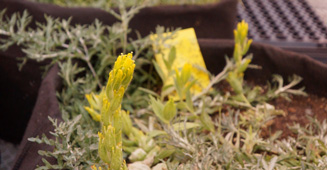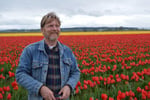

Contributor
- Topics: Archive, Gardening for Biodiversity

Prairies in the Pacific Northwest are imperiled. Nearly three-quarters of the population of western Washington live in the Willamette Valley/Puget Trough/Georgia Basin eco-region—and it’s one of the fastest developing areas in the country. But University of Washington Affiliate Professor Peter W. Dunwiddie and Associate Professor Jonathon D. Bakker of the School of Environmental and Forest Sciences, offer hope for remnants of these species-rich prairies in the Pacific Northwest.
“Over the last two decades, conservation, management, and research in these landscapes have progressed rapidly. Energetic partnerships and collaborations have sprung up to protect these endangered systems, identify key research and management needs, facilitate the exchange of information, generate new methods for restoring and managing rare species and communities, and sustain their long-term viability and ecological health.”
Here’s a look at what’s going on behind the scenes:






Share:
Social Media
Garden Futurist Podcast
Most Popular
Videos
Topics
Related Posts

Low Maintenance Gardens – Better for Pollinators and People
Autumn 2022 “I come out every day. It’s therapy, my meditation.” Janet’s young garden transformed from overgrown, invasive plants to mostly natives. The dailiness of

Calochortophilia: A Californian’s Love Affair with a Genus
Summer 2022 I can chart the progression of my life by Calochortus. For the last two decades, at least. As a teenage girl growing up

Pacific Plant People: Carol Bornstein
Spring 2022 Public gardens play a key role in demonstrating naturalistic planting design, selecting native and adapted plants for habitat, and testing techniques for reducing

Add Year-Round Interest and Winter Blooms for Pollinators
Spring 2022 This article was created from an Interview by Merrill Jensen with Neil Bell in the Summer of 2021 for our Pacific Plant People









Responses